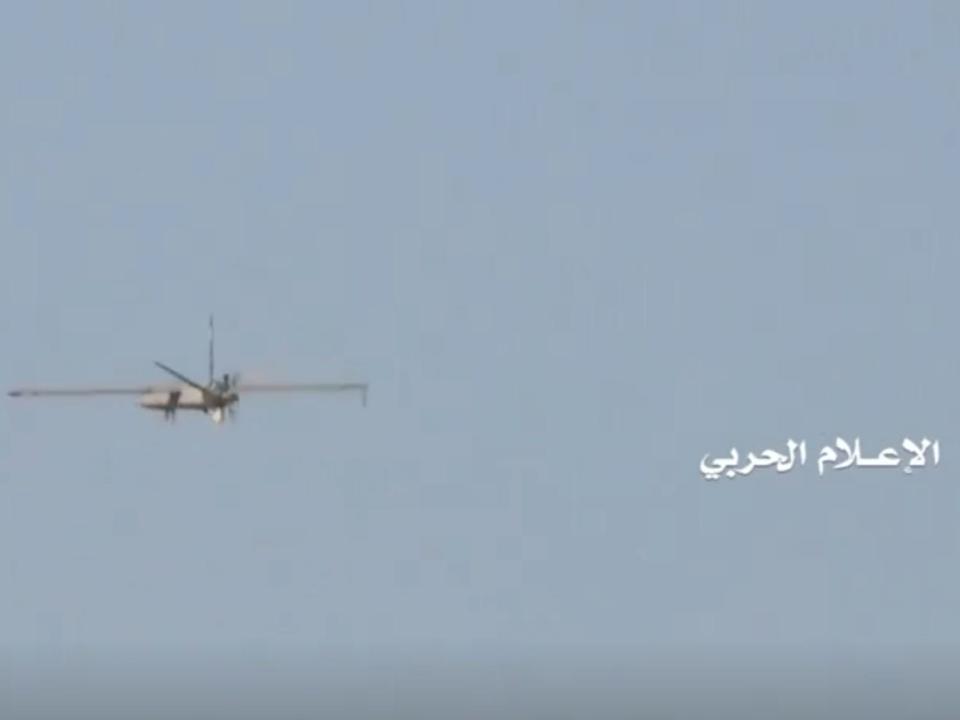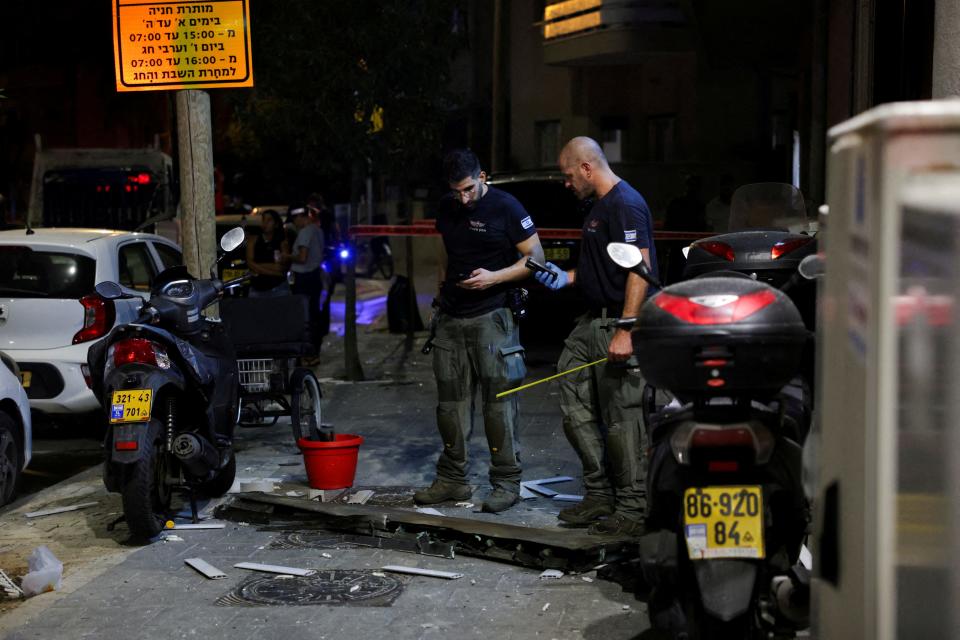The Houthis struck deep into Israel with an Iranian-made attack drone likely upgraded for longer-range strikes, IDF says
A Houthi drone struck central Tel Aviv on Friday, killing one person in the Israeli city.
The IDF said the drone used in the attack was likely a Samad-3 modified with an extended range.
The rare strike marked the Iran-backed rebels' first lethal attack inside Israel.
The Houthi-launched drone that struck a building in Israel on Friday, killing one person and injuring several more, appears to have been modified for extended-range strikes, the Israeli military said.
The Houthis claimed responsibility for the rare attack on Tel Aviv early Friday morning local time, which marked their first lethal attack in Israel. The Iran-backed rebels said that they carried out a "specific military operation" with a new attack drone that is undetectable by radars and can effectively sneak past air-defense systems.
Rear Adm. Daniel Hagari, an IDF spokesperson, said an initial assessment suggests the system used in the attack was an Iranian-made Samad-3 one-way attack drone with an extended range. He said the drone was launched from Yemen and crossed into Israeli territory from the direction of the Mediterranean Sea.
In video footage from Friday's attack, the unmanned aircraft can be seen crossing over a beach in Tel Aviv and striking a building, causing a large explosion. The attack occurred near the US Embassy branch office, although it's unclear if that was the intended target. The resulting blast shattered windows and sent shrapnel falling into the streets.
Very clear footage of a kamikaze UAV fired by Yemen’s Houthis targeting Tel Aviv overnight, near the United States Embassy Office. pic.twitter.com/nvMTna32YJ
— Clash Report (@clashreport) July 19, 2024
According to a February 2024 report by the US Defense Intelligence Agency, the Samad family of drones has a maximum range of just over 1,200 miles, which technically allows them to reach the bottom half of Israel.
The Houthis have launched dozens of drones from Yemen, although a majority have been intercepted before they could reach Israeli territory, Hagari said. He added that the IDF is investigating this latest incident to determine why the Samad-3 was not identified as a threat and shot down before it reached Tel Aviv.
"Today and in the coming days, we will conduct a situational assessment in order to examine the incident, understand exactly where the threat was launched from, what the necessary defensive responses are, and what the necessary operational responses are against those who threaten the State of Israel," Hagari said.

Looking at the available information, Fabian Hinz, a research fellow for defense and military analysis at the International Institute for Strategic Studies think tank, said that "it's possible" that the drone used in the Tel Aviv attack is a "slightly more capable" Samad variant.
He wrote in commentary on social media that "for the Houthis, increasing the UAV range would be quite attractive as it would allow them to strike targets further away, fly routes evading enemy defenses and attack from unexpected angles."
The Houthi said their drone strike was carried out in support of Palestinians in Gaza, the same rationale for their ongoing attacks on merchant shipping lanes in the Red Sea and Gulf of Aden. The rebels have spent months launching one-way attack drones and anti-ship missiles into the waterways, often forcing US Navy and allied warships to intercept the threats.

Israel has yet to strike the Houthis directly in Yemen. The US and UK militaries, however, have carried out several rounds of joint strikes targeting rebel facilities there, and American forces have carried out a number of unilateral strikes.
Beyond the Houthis, Iran also provides military and financial support to Hezbollah militants in Lebanon and Hamas in Gaza.
Friday's attack took place hours after Israel killed a senior Hezbollah commander in southern Lebanon and raises long-standing fears that the devastating Gaza war could escalate further into a broader regional conflict.
Read the original article on Business Insider

